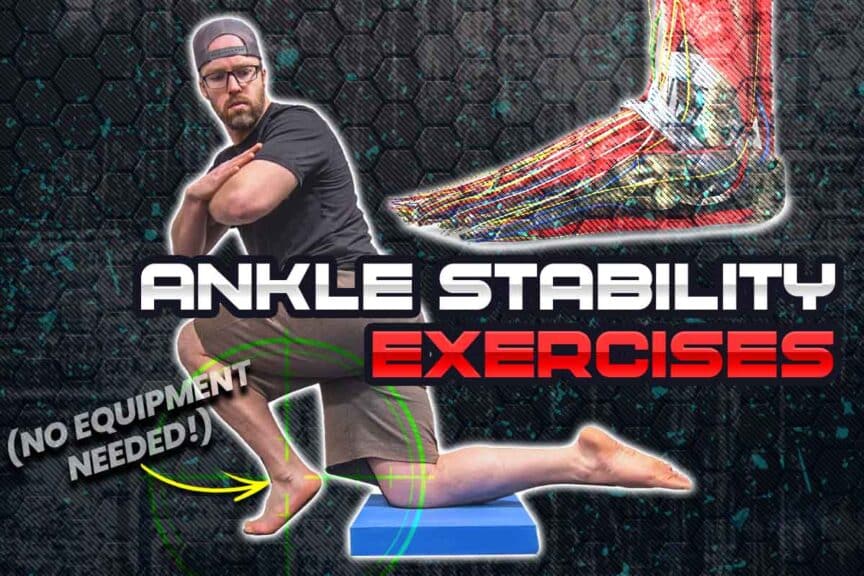While there are a lot of great ankle rehabilitation devices and ankle-specific equipment out there, not everyone has access to them, or any other equipment, for that matter. So, how can you perform effective ankle stability exercises without any equipment? Can it even be done?
Of course it can! And I’ll prove it to you if you read through this article!
You’re about to get a progression of equipment-free ankle strengthening and stability-enhancing exercises you can try if you need to improve your ankle stability. They can be used for injury prevention or injury rehabilitation. They’re challenging, and they work.
So, let’s get to it.
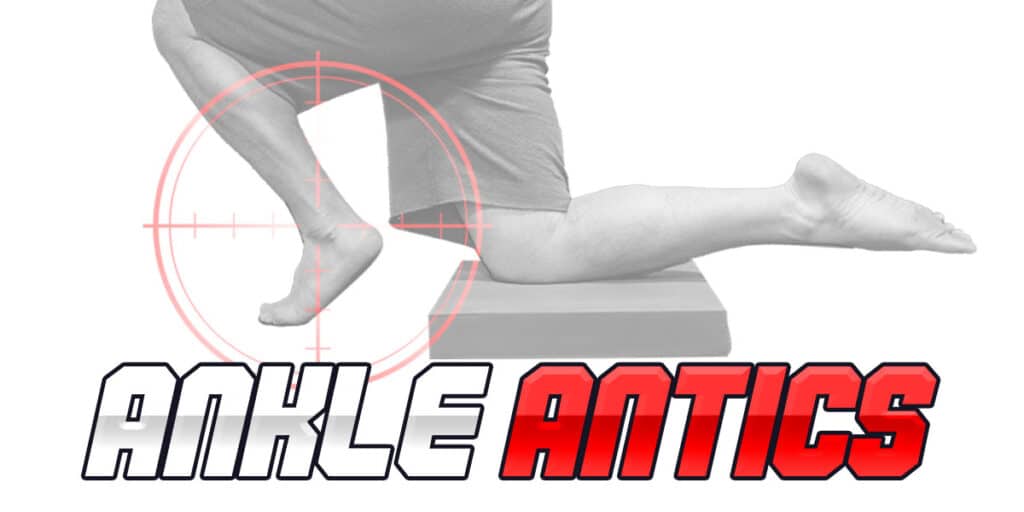
Ankle function: Why perform THESE ankle exercises?
These exercises all work to help you decrease the risk of incurring future ankle injury by enhancing two particular aspects of ankle function:
- Improving the strength and health of the muscles and tendons that are responsible for physical control and movement of the foot and ankle
- Enhancing proprioception of the ankle, which refers to your brain’s awareness to interpret and determine the positioning of your ankle.
This second point is critical to be aware of since research has clearly shown that once you’ve had a nasty ankle sprain or similar ankle injury, ankle proprioception is impaired, leaving you at an increased risk of further ankle injury.
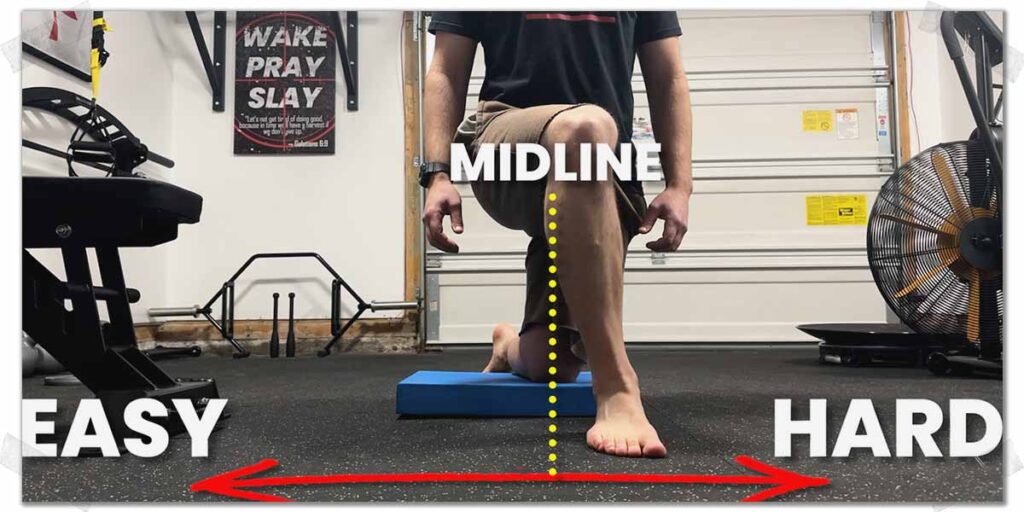
So, enhancing ankle stability is important not only for improving strength but also for proprioceptive abilities. And that’s what these exercises will help accomplish — physical robustness of muscles and tendons and better positional awareness of the ankle.
A quick heads up: for some of these upcoming exercises, you’ll be placing one knee on the ground, so you may want to use a padded surface for your knee. For those who don’t have a dedicated padded surface, I recommend folding up a towel.
If you do have a few dollars to spend, I certainly advocate picking up a balance pad, as these pads are designed to be used for improving ankle stability. You can easily pick one up on Amazon for a few dollars. Just type in something along the lines of “ankle balance pad” into the search box, and you’ll be met with a ton of different options.
Related article: Ankle Stability Exercises For Injury Prevention & Rehabilitation
Pro tip: Since these pads also double as a padded surface for your knee, they open up a new world of exercises you can perform for your fitness-based training pursuits (in addition to using them for ankle balancing exercises).
Alright, let’s get to the exercises!
Exercise 1: Half kneeling rotations with ankle plantarflexion
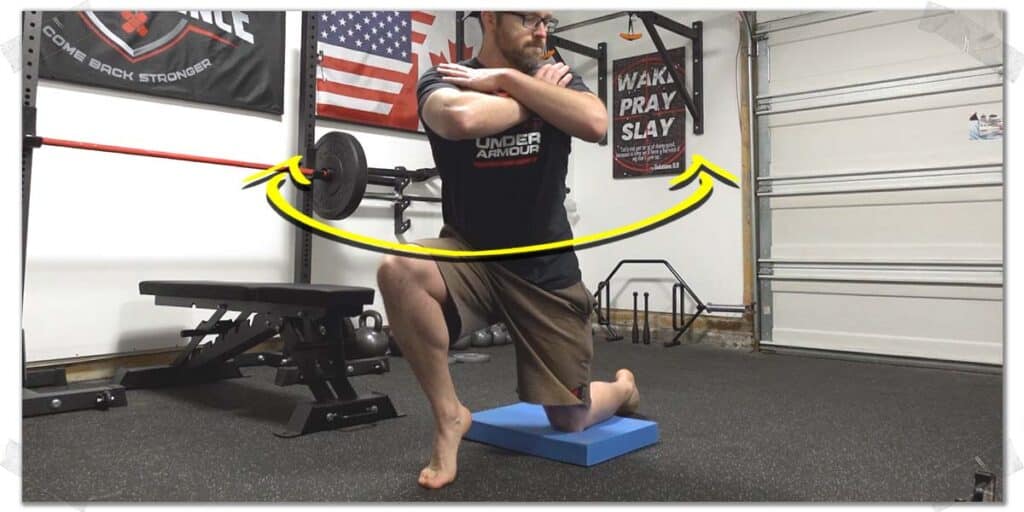
The first exercise that will rock your world is a half-kneeling rotation with your ankle in a plantarflexed position. Plantarflexion refers to the motion we make with our ankle when we push our foot downwards as if stepping on the gas pedal when driving a vehicle. In this case, you’re performing this exercise while ensuring your heel always stays off the ground.
Keeping the ankle in this position results in the muscles of the foot and ankle producing an isometric contraction, meaning they stay in a contracted state throughout the entirety of the exercise. As you likely know, by staying on the ball of the foot, there’s a small base of support that the ankle now has to work with, making stability much more challenging and, thus, forcing your ankle to work harder.
The beauty of this exercise — along with the other exercises listed in this post — is that the challenge can be regressed or progressed based on your stance width, which alters your base of support.
If you want a major challenge for any of these exercises, cross your front foot an inch or two over the midline of your body.
Additionally, the further back you lean with this exercise, the less demanding it will be on your ankle while leaning forward will be more demanding from an ankle-strength perspective.
Once you find your optimal base of support, cross your arms over your chest and slowly twist your upper body left and right while keeping your lower body still. Perform as many repetitions as you’d like for each side.
Exercise 2: Half kneeling ankle pumps
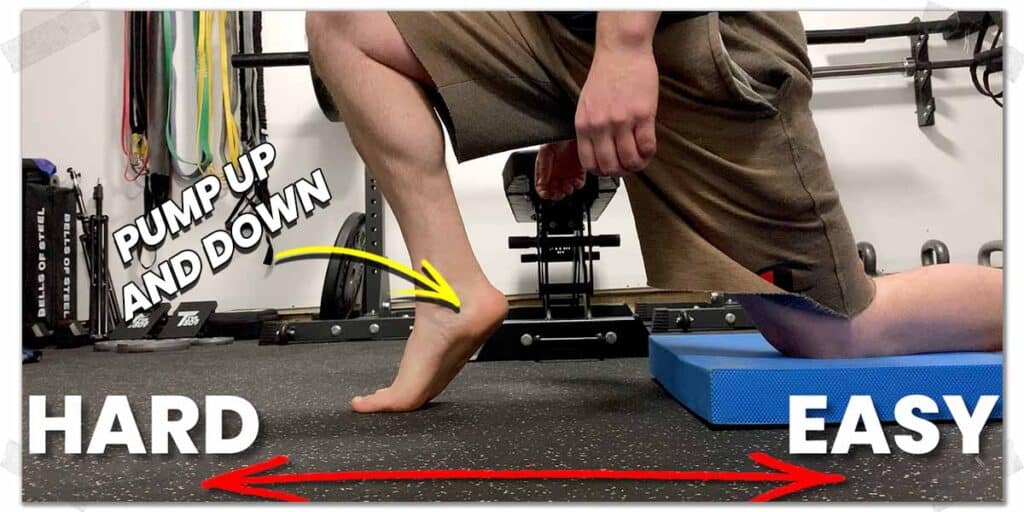
The second exercise to get after here is the half-kneeling ankle pump. As with the other exercises in this video, the intensity can be progressed or regressed along a continuum to find the optimal stability challenge for your needs and abilities.
Place your affected ankle in front of you for this exercise and kneel on your opposite knee.
Keep in mind that a wide base of support will make this exercise easier, while a more narrow base of support will force your ankle to work a bit more aggressively to achieve stability, and crossing your front foot over the midline of your body will really kick it up a notch.
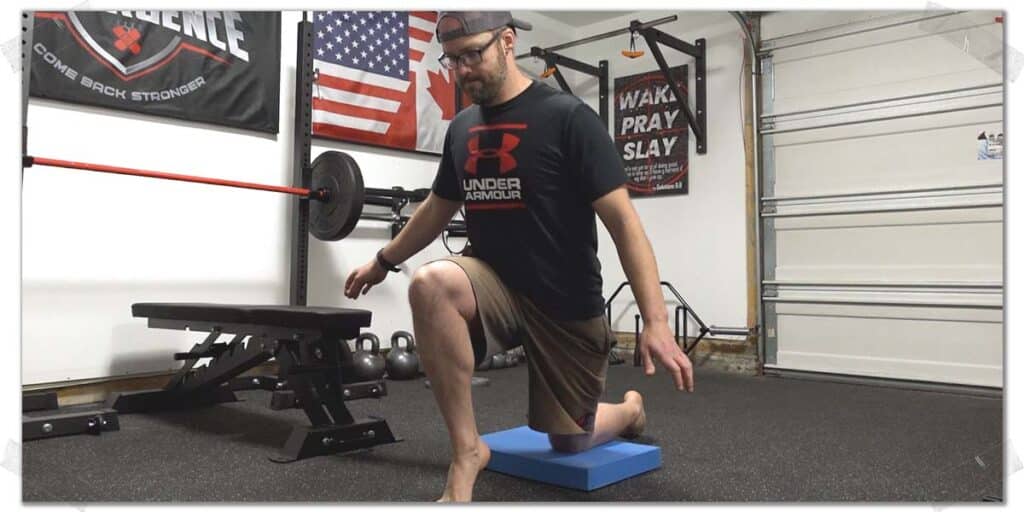
Here are the steps to the exercise:
- Start by finding a stance width that works best for you.
- Next, lean forward enough to load some weight onto your ankle; as with the previous exercise, the more you learn, the more challenge your ankle will receive, so again, play around to find what works best for you.
- From there, simply pump your ankle up and down. Do this in a very slow and controlled manner. You can pause up top for a second or two or keep the movement continuous.
Pro tip: As an advanced method, you can perform this with your ankle on a soft surface, which will force the ankle to work much more aggressively to achieve stability due to the dynamic surface underneath your foot.
Exercise 3: Lunging ankle pumps and rotations
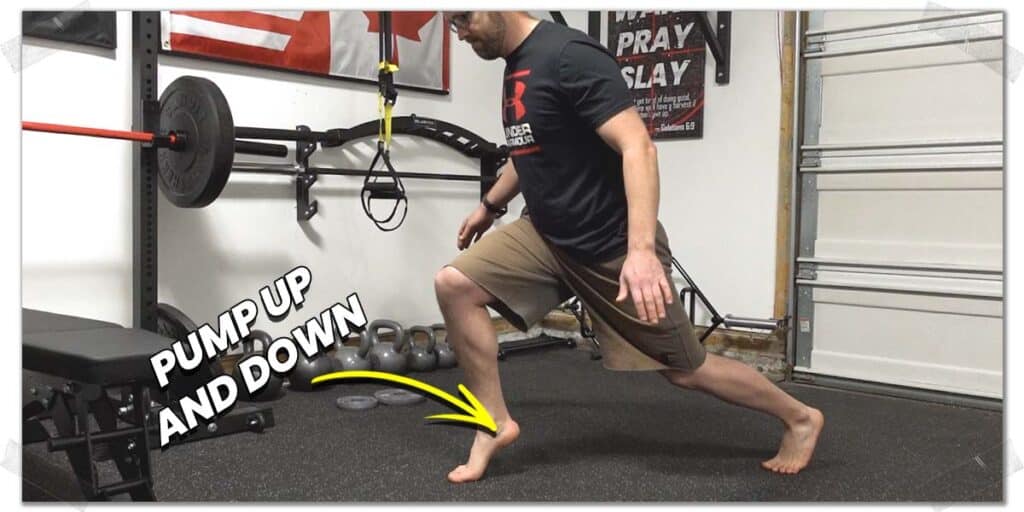
If you’re in the later stages of your ankle rehabilitation, you may find either of the two previous exercises worth performing while in a lunging position.
These are essentially the same exercises as the half-kneeling ankle pump and the half-kneeling rotation, but now the ankle and the front leg are loaded to a much greater extent, requiring more intense foot and ankle effort for both exerting strength and movement control. And, as a bonus, your front leg will get a nice endurance challenge as well.
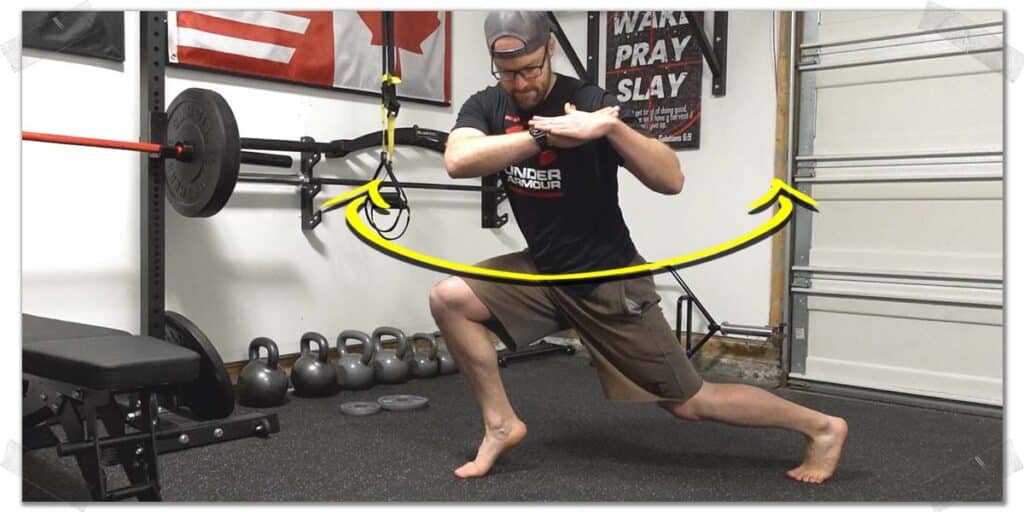
The base-of-support concept is the same as the previous two exercises, so find what’s best for you. Additionally, the extent of the challenge from this exercise can significantly influence how deep or shallow you hold your lunge position. A shallow lunge position will be much easier, while a deeper one will be much more challenging.
For plenty of people, performing these exercises with the foot on the floor will be plenty of challenge, but again, if you really want to kick things up a notch, place your entire front foot on a soft surface to put your ankle stabilizers into overdrive.
Final thoughts
While there are plenty of variations of these exercises that can be incorporated, or other equipment-free exercises altogether, these three simple exercises and the continuum of challenges you have within each one. Additionally, the half kneeling exercises should serve as a great starting point for those who are in earlier stages of ankle rehabilitation, while the lunging position will be ideal for those who are in later stages.
Regardless of which exercises you perform, you won’t have to worry about needing to get your hands (or feet!) on any specific equipment in order to challenge your ankle!
Related article: Next Steps: What To Do After Physical Therapy (Becoming Even Stronger)

Hi! I’m Jim Wittstrom, PT, DPT, CSCS, Pn1.
I am a physical therapist who is passionate about all things pertaining to strength & conditioning, human movement, injury prevention and rehabilitation. I created StrengthResurgence.com in order to help others become stronger and healthier. I also love helping aspiring students and therapists fulfill their dreams of becoming successful in school and within their clinical PT practice. Thanks for checking out my site!

